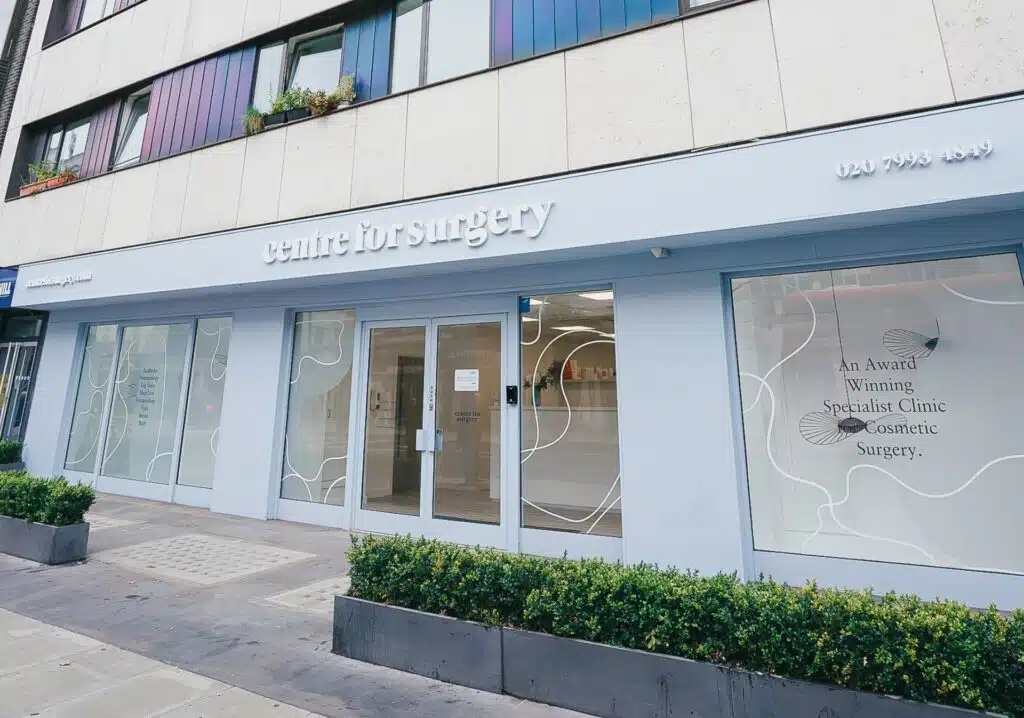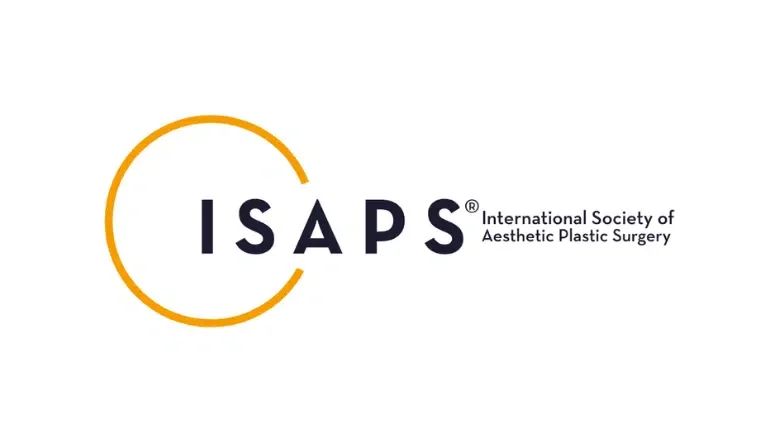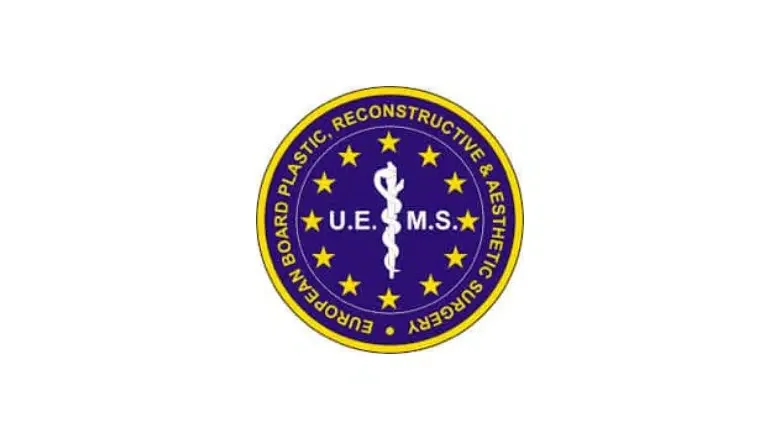If you’ve noticed that your lower legs or ‘calves’ don’t have much shape, you might be wondering why. There are loads of reasons. It could be something you were born with, like your genes, or maybe you had an accident that affected the way they look. Some folks even have birth defects that make their calves look thinner or not quite even. One way to help improve how your calves look is through calf augmentation with implants. An alternative approach is calf augmentation with fat transfer. These are a special procedures that can make your calves look more toned and shaped, giving them a beefier, more balanced look.
Now, you might be curious about how long these calf implants last and if they’ll need changing down the road. We’ll get into that, too.
If you’re thinking about calf augmentation, you’re in safe hands with us at Centre for Surgery. Our surgeons are among the best in the UK when it comes to body shaping surgeries like this. We’ve successfully carried out hundreds of these calf procedures at our clinic on Baker Street in London. Our surgical team has loads of experience, and they use their top-notch skills to help you get the look you’re aiming for. We’re all about offering you the best treatment possible, so you can feel confident about your body.
RELATED: Calf Implants Cost UK
Technique for Calf Augmentation Using Implants: A Step-by-Step Overview
When it comes to enhancing the size and shape of your calves, the method we often recommend is the subfascial technique for calf augmentation with implants. This specific technique is highly specialised, ensuring a natural-looking result that blends seamlessly with the surrounding tissues. So how does it work? Let’s break it down into steps for a clearer understanding.
- Incision Placement: First things first, your surgeon makes a carefully planned incision. This cut is usually made along the natural fold at the back of your knee, keeping it discreet so that any resultant scarring is as inconspicuous as possible.
- Accessing the Muscle: After making the incision, the next step is to gently pull back the skin and other layers to gain access to the calf muscle. This step is performed with great care to minimize any damage to the surrounding tissues.
- Inserting the Implant: The implant is then placed over the existing calf muscle but beneath a layer called the ‘fascia.’ The fascia is a fibrous tissue layer that envelops and separates muscles and other internal organs. Placing the implant beneath this layer helps to secure it, ensuring that it stays in its proper position even during physical activities.
- Securing the Implant: The surgeon will then make sure that the implant is snugly and accurately positioned to give the most natural-looking enhancement. The goal is for the implant to sit comfortably and securely, offering you the volume and contour that you desire.
- Closing the Incision: Once the surgeon is satisfied that the implant is in the optimal position, the next step is to close the incision. This is typically done using dissolvable sutures, which are stitches that will naturally disappear as your body heals.
- Recovery Phase: During the recovery period, these sutures will dissolve on their own, eliminating the need for a follow-up appointment just for suture removal. This makes the post-surgical period a bit easier and more convenient for you.
RELATED: Calf Implant Recovery
By following this subfascial technique for calf augmentation, our highly skilled surgeons ensure that you not only get the voluminous and well-defined calves you’re looking for but also benefit from a smoother, less stressful recovery process.
How Long Can You Expect Your Calf Implants to Last? A Comprehensive Guide
When it comes to the longevity of calf implants, the good news is they’re designed to be long-lasting. In essence, calf implants don’t have an ‘expiry date,’ so how long you decide to keep them is largely your call. The durability of these implants varies from person to person, often depending on individual lifestyle factors and the quality of the initial surgery.
Duration Variances
While some people choose to keep their calf implants for an extended period, like 20 years or even more, others may opt for a shorter time frame, such as two or three years. Regardless of the time span, the aim is that your calf implants should continue to provide that enhanced definition and volume you desire for as long as you’re not encountering any problems.
Potential Issues and Next Steps
Although it’s uncommon, there might be instances where you could face issues with your implants. These could range from the implant shifting out of its original position to more serious concerns like loosening or even rupture. If you notice any unusual changes or experience discomfort, it’s crucial to consult your surgeon immediately for a thorough assessment.
Your surgeon will carry out a detailed examination and may use diagnostic tools like imaging scans to get a clearer picture of what’s going on. Once the problem is accurately identified, your surgeon will recommend the most effective course of action to resolve it. This could range from minor adjustments to a complete implant replacement, depending on the severity of the issue.
Ongoing Maintenance and Check-ups
Even if you don’t encounter any issues, it’s a good idea to have regular check-ups with your surgeon to ensure everything is functioning as it should. These visits allow your medical team to monitor the integrity of the implants and the surrounding tissues, making sure you continue to enjoy the benefits of your calf augmentation for as long as possible.
Is It Possible to Remove Calf Implants? What You Need to Know
When it comes to calf implants, it’s entirely possible for them to remain in your body indefinitely, provided there’s no medical need for their removal. They’re designed to last, and many people keep them for years, enjoying the enhanced definition and volume they offer.
When Can Calf Implants Be Removed?
The decision to remove calf implants is usually a personal one and can be made for various reasons. Some people might choose removal due to lifestyle changes, aesthetic preferences, or even comfort. If you decide that you no longer want your calf implants, they can certainly be removed.
How Does the Removal Procedure Work?
The removal process involves another surgical procedure and is typically quite straightforward. Here’s how it generally goes:
- Initial Consultation: First, you’ll meet with your surgeon to discuss the reasons for removal and what to expect during and after the procedure.
- Incision: Just like during the initial implantation, an incision will be made. In most cases, the surgeon will use the original scar from your first procedure to access the implant, helping to minimize additional scarring.
- Implant Removal: Your surgeon will then proceed to carefully remove the calf implant. This is done with precision to ensure minimal trauma to the surrounding tissues.
- Closing the Incision: Once the implant is successfully removed, the incision will be closed up. Dissolvable sutures are often used for this, similar to your initial calf implant surgery. These sutures will naturally disappear during the healing process.
Post-Operative Care and Recovery
After the removal surgery, you’ll go through a recovery phase. Your medical team will provide you with specific aftercare instructions to ensure a smooth and uncomplicated healing process.
Is Calf Implant Revision an Option? What You Should Know
Absolutely, you can get a calf implant revision if you’re not fully satisfied with the initial results or if you encounter issues down the line. Sometimes, you may find that you want a different implant size, or perhaps you’ve noticed that the implants have shifted from their intended position. Revision surgery offers a solution for these concerns.
The Consultation Stage
The first step in the process of calf implant revision is a detailed consultation with your surgeon. This meeting serves as an opportunity for you to express any concerns you have about the implants’ size, shape, or position. Your surgeon will listen attentively, examine your calves, and may even use diagnostic tools like imaging scans to understand the situation better.
Creating a Customised Plan
Based on your concerns and their own assessment, your surgeon will then create a personalised surgical plan tailored to meet your needs. This could mean opting for a different implant size that better aligns with your aesthetic goals, or it may involve repositioning your existing implants for a more natural and comfortable fit.
RELATED: Calf Augmentation with Fat: Ultimate Guide
The Revision Surgery
Much like the original calf implant procedure, the revision surgery involves:
- Incision: An incision will be made, often using the scar from your initial surgery to minimise any new scarring.
- Implant Replacement or Adjustment: Depending on your specific needs, the surgeon will either replace the existing implants with new ones of your chosen size, or adjust the position of your current implants for a better fit and appearance.
- Closing Up: The incision is then sealed, often using dissolvable sutures that will vanish as you heal.
Post-Surgery and Recovery
After the revision surgery, you’ll need some time to recover. The post-operative care and healing process will be similar to what you experienced after your initial calf augmentation. Your surgeon will provide detailed aftercare instructions to help ensure a smooth and speedy recovery.
Why Choose Centre for Surgery for Your Calf Implant Revision?
When it comes to something as specialised as calf implant revision surgery, you’ll want to entrust your care to the very best in the field. Centre for Surgery is a leading clinic in the UK specialising in plastic surgery, and our track record speaks for itself. Here’s why you should consider us for your calf implant revision.
Expertise and Experience
Our team of surgeons are among the most experienced in the UK, bringing their vast expertise in body contouring surgeries. Over the years, we’ve successfully performed numerous calf implant and revision surgeries, offering personalised solutions tailored to each patient’s unique needs.
Quality of Care
From your initial consultation to your post-operative follow-up, our focus is on offering the highest standard of care. We aim to create a comfortable and safe environment, ensuring that you are well-informed and at ease throughout your surgical journey.
State-of-the-Art Facility
Our Baker Street clinic is equipped with the latest medical technology, making sure you receive the best treatment possible. Your safety and comfort are our top priorities, and our facility reflects this commitment.
Patient Testimonials
- “I had my calf implant revision at Centre for Surgery and couldn’t be happier. The team was professional, attentive, and the results are just amazing. Highly recommend!” – Jane D.
- “From consultation to post-op, my experience was nothing short of exceptional. The surgeons truly know what they’re doing. I’m thrilled with my results!” – Mark S.
- “Centre for Surgery is the gold standard. Their expertise and care made me feel comfortable every step of the way. I’m extremely satisfied with the outcome of my revision surgery.” – Emily L.
Convenient Finance Options
We understand that financial considerations are important. That’s why we offer flexible finance options, including 0% APR with Chrysalis Finance, to make the procedure accessible to all. Learn more about our finance options
Additional Resources
Want to know more? Check out our plastic surgery blog and Clinic FAQs for more information on calf implant revision and other procedures.
Ready to Book Your Consultation?
Get in touch with us to book your initial consultation and take the first step towards achieving the calves you desire.
📞 Phone: 0207 993 4849
📧 Email: contact@centreforsurgery.com
📍 Address: 95-97 Baker Street, London W1U 6RN
Baker Street clinic link
For more about why you should choose us, visit our About Us page. We look forward to helping you achieve your aesthetic goals!










